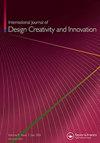面对极端的不确定性- COVID-19大流行的爆发如何影响产品开发
IF 2.5
Q4 ENGINEERING, MANUFACTURING
International Journal of Design Creativity and Innovation
Pub Date : 2022-12-20
DOI:10.1080/21650349.2022.2157888
引用次数: 1
摘要
2019冠状病毒病大流行对全球造成了破坏,但人们对其如何影响产品开发知之甚少。通过对24位实践产品开发领导者的访谈,我们发现COVID-19产生了独特的外部和内部不确定性组合,从而对产品开发产生了几个直接影响。据报告,在追求创新的水平、发展进程和资源方面进行了初步调整。在创新水平和资源配置方面,没有观察到适应性的一致性:在不同公司的产品开发活动中,激进/增量、扩张/缩减、本地/国际和内部/外部协作平衡发生了相反的变化。过程适应在方向上更加统一,专注于增加灵活性和敏捷性。就不同阶段的产品开发方法而言,我们发现公司迅速寻求创造性的方法,以虚拟手段取代他们在创意产生,原型制作,客户互动,验证等方面的传统方法。此外,人际互动质量的变化,特别是非正式互动,被认为对他们的创造性努力产生了深远的、意想不到的负面影响,无论是在产品开发、开发过程还是资源配置方面。总体而言,结果强调了可用于应对外部不确定性的适应性选择的多样性,尽管仍需要更多的研究来研究这些选择如何影响长期恢复力。本文章由计算机程序翻译,如有差异,请以英文原文为准。
Facing extreme uncertainty – how the onset of the COVID-19 pandemic influenced product development
ABSTRACT The COVID-19 pandemic has been a global disruption, but little is known about how it impacted product development. Based on interviews of 24 practicing product development leaders, we find that COVID-19 generated a unique combination of external and internal uncertainties and thus had several direct impacts on product development. Initial adaptations were reported in the level of innovation pursued, the development processes and the resourcing. In terms of level of innovation and resourcing, no uniformity in adaptations were observed: opposite changes were made across radical/incremental, expanding/reducing, local/international and internal/external collaboration balances in the different companies’ product development activities. Process adaptations were more uniform in direction, focusing on increasing flexibility and agility. In terms of product development methods for different phases, we find companies quickly seeking creative approaches to replace their traditional methods in idea generation, prototyping, customer interaction, validation etc. with virtual means. Furthermore, changes in human interaction quality, particularly informal interaction, were seen to have far-reaching, unintended negative consequences on their creative efforts, whether in product development, development process or resourcing. Overall, the results highlight the diversity of adaptive choices available to respond to external uncertainties, though more research is still needed on how these influence longer term resilience.
求助全文
通过发布文献求助,成功后即可免费获取论文全文。
去求助
来源期刊

International Journal of Design Creativity and Innovation
ENGINEERING, MANUFACTURING-
CiteScore
3.80
自引率
27.80%
发文量
15
期刊介绍:
The International Journal of Design Creativity and Innovation is an international publication that provides a forum for discussing the nature and potential of creativity and innovation in design from both theoretical and practical perspectives. Design creativity and innovation is truly an interdisciplinary academic research field that will interest and stimulate researchers of engineering design, industrial design, architecture, art, and similar areas. The journal aims to not only promote existing research disciplines but also pioneer a new one that lies in the intermediate area between the domains of systems engineering, information technology, computer science, social science, artificial intelligence, cognitive science, psychology, philosophy, linguistics, and related fields. The journal covers, but is not restricted to, the following topics: ·Theories on Design Creativity and Innovation ·Cognition of Design Creativity ·Innovative Process ·Inventive Process ·Analogical Reasoning for Design Creativity and Innovation ·Design Synthesis ·Method and Tools for Design Creativity and Innovation ·Representation of Design Creativity and Innovation ·Education for Design Creativity and Innovation ·Concept Generation and Inspiration.
 求助内容:
求助内容: 应助结果提醒方式:
应助结果提醒方式:


